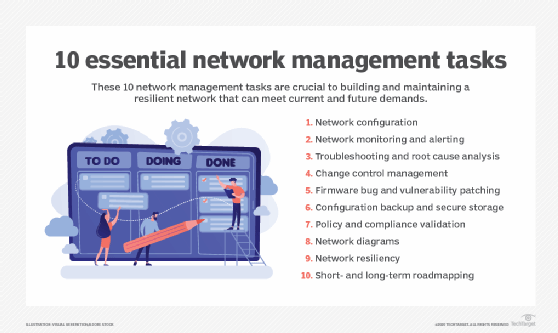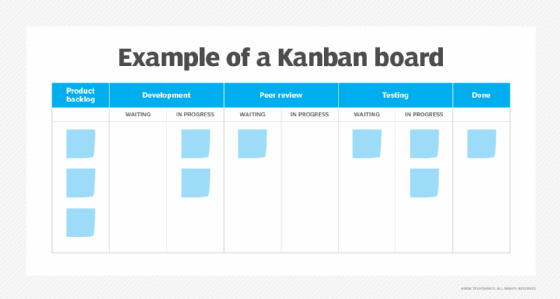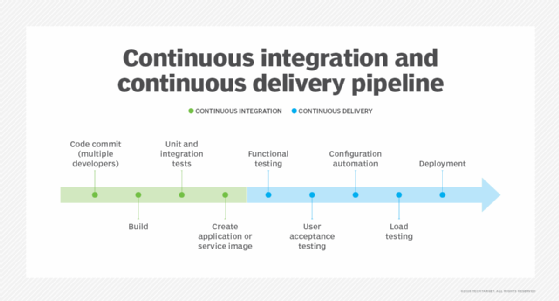best practice
What is a best practice?
A best practice is a standard or set of guidelines that is known to produce good outcomes if followed. Best practices are related to how to carry out a task or configure something. Strict best practice guidelines may be set by a governing body or may be internal to an organization. Other best practices may be more informal and can be set forth in manufacturer's guidance, in published guidelines or even passed along informally.
In some industries, there may be a legal requirement to follow best practice guidelines. In many technological fields, however, a best practice usually presents the optimal way to work, how to use a product or a set of ideals to reach toward. It may not be required to follow a best practice, but an organization should consult a best practice regularly and follow it wherever possible.

How is a best practice established?
Best practices may generally be created in one of two ways. An organic best practice is usually formed naturally after years of trial and error make it clear that following a certain procedure is better than any other procedure. An established best practice is created by an organization or manufacturer through research to set guidelines or benchmarks for other organizations to follow.
Organic best practices arise naturally as people work. They find that some ways of working produce better outcomes than others. These can come from an individual or from groups as they exchange ideas and experience. Often, these best practices are written down, either in a book or online, to be shared with others. An everyday example of this type of best practice is to look both ways before crossing the street. It isn't a law to look, and people may find some success if they don't do it. But this often-repeated piece of advice produces the best results in the long run if followed. Another example of a best practice is using an Agile Kanban working structure.
An established best practice is set by a governing organization after researching the best way to accomplish a task. The establishing organization may be governmental, an industry group, the original equipment manufacturer (OEM) or the software manufacturer, or the best practice may be established by a company for internal use. These are often similar to a standard but are optional to follow. They may be a benchmark that an organization can compare itself to. An everyday example of this type of best practice is to change your car's oil every 5,000 miles. It is highly recommended by the manufacturer and not following it reduces the longevity of the vehicle. Another example of a best practice is the National Institute of Standards and Technology's Cybersecurity Framework.

Where do you find best practice guidelines?
Best practices may be published in several places depending on what they are for. As best practices constantly change, keeping up to date on the latest developments is crucial.
OEMs. Read documentation included with a product or software carefully. Check the manufacturer's website for updates or posts that outline new best practice guidelines.
Governmental. Check government websites for published best practices. These may be industry-specific, and following them may be legally required.
Industry sources. Follow industry special interest groups and mailing lists. Read books published by industry experts.
Informal sources. Follow discussion boards and professional blogs related to the technology.
How can an organization establish best practices?
When a business establishes and communicates their internal best practice guidelines, it can lead to a more consistent work product, greater efficiency and increased employee satisfaction.
Identify areas that would benefit from establishing best practices. Look for roles or groups with inconsistent work product or where there are differing opinions of how to carry out a task.
Search for existing best practices. Find if there is already written guidance internally or externally for how to carry out a task.
Ask workers what they find helpful to capture organizational knowledge. If one group is seeing greater success than others, find out what they are doing differently, and try to apply it for all groups.
Communicate new best practices. Make the new guidelines clear to understand, and publish them in an easy-to-find place.
Measure the impact of new best practices. Setting new guidelines may not always have the desired effect. Schedule a follow-up examination, and make changes as needed.
Coding best practices for programmers and IT
Computer programming and development are areas where establishing and following best practices is common and beneficial. This is because there are an infinite number of ways to write computer code that works, but settings standards makes the code easier to read by others, simple to maintain and more fault-tolerant.
The most common coding best practice is to add comments to the source code. While comments do not affect functionality, they make the code easier to use in a group. Other standards that may be followed are code formatting, white space usage and notation. An example of this may be to use Hungarian notation.
Many organizations are introducing modern best practices.
Agile or Lean practices seek to apply lessons from manufacturing on flexibility to IT. These include reducing work in progress and increasing internal work visibility.
Continuous integration/continuous delivery (CI/CD) seeks to reduce the time it takes to publish a change by using automated processes. This can increase productivity and improve time to market for impactful changes.

Zero-trust networking seeks to eliminate all implied authentication from corporate networks. All network connections and access must be authenticated and inspected.
What is best current practice?
The Internet Engineering Task Force publishes Best Current Practices (BCPs), in addition to Requests for Comments. The BCP documents establish guidelines that cannot be set as standards but are beneficial for organizations to follow.
See Agile team best practices to follow in the enterprise, Power Apps best practices to build business apps, key security patch testing best practices and best practices for increasing cloud visibility. Learn seven best practices to ensure your CI/CD pipeline's security, best practices and strategies for logging in Go, customer service best practices to follow and FinOps best practices to optimize cloud costs.








